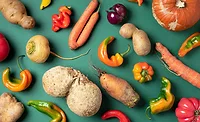Sous Vide Processing—the Good, the Bad and the Ugly

Image by Erikoinentunnus via Wikimedia Commons
Sous vide cooking is a method in which foods are thermally processed in vacuum packaging at lower temperatures for longer periods of time than traditional food manufacturing processes. The term sous vide is French for “under vacuum” and was perfected in the 1970s, launching a new take on food preparation. Manufacturing with sous vide is becoming very popular, and commercial sous vide equipment sales are projected to grow by more than $80 million from 2023 – 2028.
The vacuum packaging prior to thermal processing creates a new environment for microbes present in food matrices, and subsequently, presents new challenges. Packaging prior to processing presents benefits and risks from a food safety perspective that should be considered prior to implementing sous vide cooking methods.
The Good
Sous vide’s popularity is due to the exceptional finished product sensory characteristics and the consistency of the final product. Cooking under vacuum results in improved sensory when compared to traditional cooking methods by supporting retention of moisture, retention of nutrients and penetration of seasonings into the food matrix. Vacuum packaging also produces an even cook as every portion of the food is exposed evenly to a constant temperature resulting in a high-quality, consistent finished product with little batch to batch variation.
Vacuum packaging prior to the microbial kill step eliminates the risk for post processing contamination of the final product as long as package integrity is maintained. Pathogenic microorganisms such as Salmonella spp. and Listeria monocytogenes present in the post-cook environment are not able to come in contact with the food matrix. In addition, preventing post-processing contamination of the food with non-pathogenic organisms can potentially extend shelf life of the product.
The Bad
Although cooking food in vacuum packaging reduces post-processing contamination, pathogens present in the raw materials are still a concern. With the lower processing temperatures associated with sous vide, validation to meet a 5-6 log reduction of pathogens would be necessary if documentation and/or guidance is not available to support these alternative processing conditions. Without a validated kill step, outgrowth of typical pathogens is still possible in vacuum packaging. Pathogens of concern such as Salmonella spp., pathogenic E. coli, and Listeria monocytogenes are all facultative anaerobes and can survive in an aerobic, oxygen rich, environments as well as reduced-oxygen and anaerobic environments such as in vacuum packaging.
Second, selection of the best packaging for this technique should be carefully considered. Food-grade plastics with heat resistance and bisphenol A (BPA) free are recommended for sous vide. Testing should be completed to ensure the packaging does not impart undesirable flavors to the product and maintains integrity during post-cook processing and shipping.
The Ugly
Spores! In reduced oxygen or oxygen free environments like vacuum packaging, anaerobic spore forming bacteria become a significant concern for sous vide processing. Bacterial spores from these organisms are only killed under extremely harsh thermal processing conditions compared to actively dividing vegetative bacterial cells. The risk for spores is mitigated in canning using high heat, high pressure and pH modification, conditions that are not achievable in sous vide cooking. Minimally processed foods can kill vegetative cells of anaerobic spore forming bacteria but the spores themselves are actually activated by the thermal processing. These spores become vegetative cells, which can then outgrow into toxin producing states. Toxin production occurs while in the anaerobic environment provided by sous vide packaging, which can then cause severe illness if strict temperature control is not maintained. Organisms such as Clostridium botulinum, Bacillus cereus, and Clostridium perfringens are all part of the anaerobic spore forming group that should be considered in a risk assessment when pursuing sous vide processing. If these organisms are a risk, additional critical control of the food matrix to temperatures below 3°C after processing will be needed in a manufacturer’s food safety plan. A short shelf life is also recommended with studies to investigate outgrowth and toxin production for these organisms.
Sous vide processing produces food with high-quality sensory characteristics, great nutrient retention and a consistent final product. There are benefits to food safety as post-processing contamination is reduced but as with any food product, a good risk assessment to address pathogens of concern is required.Looking for a reprint of this article?
From high-res PDFs to custom plaques, order your copy today!






